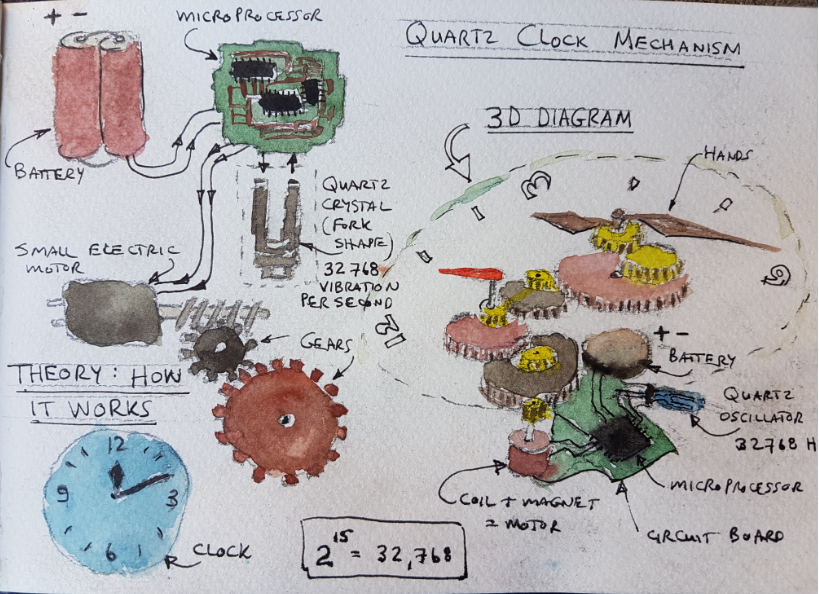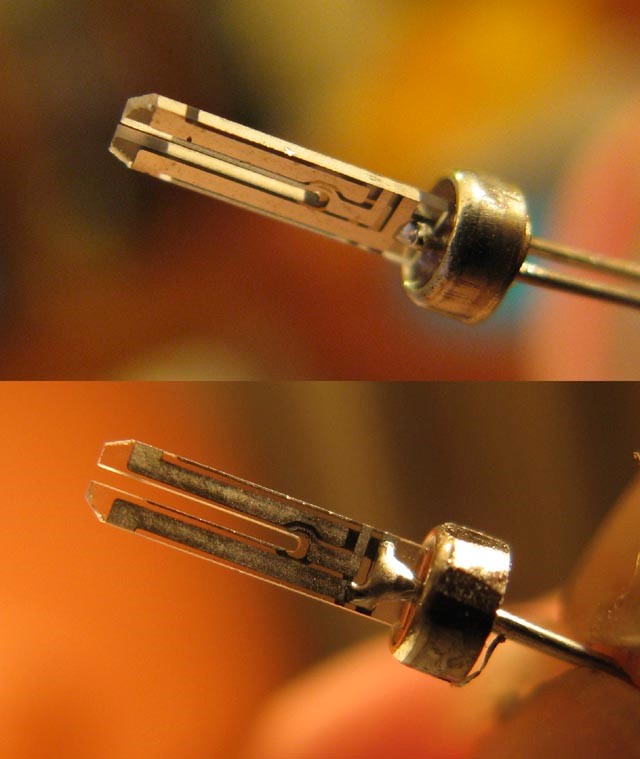Product description: Article 19 pages (1200 words) with many images and sketches by the author.
Excerpt:
The incredible high vibration of over 32,000 times is not always appreciated by us when we look at the simple, inexpensive and humble quartz clock mechanism. In this article, I wanted to make you aware of the awe and wonder of the intricate, and extravagant design of the quartz crystal. The fantastic design of the crystal combined with the intervention of human scientists and engineers (adaption) make it a thing of beauty!

FROM MY SKETCHBOOK: Freehand sketches of the intricate workings of a quartz clock. Watercolours and pencil. Annotations – black ink (fountain pen). Credit: Author

Picture of a quartz crystal resonator (quartz oscillator), used as the timekeeping component in quartz watches and clocks, with the case removed. It is formed in the shape of a tuning fork. Most such quartz clock crystals vibrate at a frequency of 32,768 Hz. Credit: https://en.wikipedia.org/wiki/Quartz_clock
Read the article online as a blog post:
https://fivehousepublishing.com/2020/12/19/a-quartz-crystal-vibrates-at-an-amazing-32768-times-per-second-a-series-of-flip-flops-take-it-to-only-1-pulse-per-second/
Description
The amazing world of science: How the intervention of humans takes quartz crystal technology to the next level. The ingenious implementation of flip-flops.
By William Van Zyl (2021)
Tick, tock, tick, tock, … you are reading a time-clock.
Two to the power of Fifteen (215) is the vibration of a quartz crystal per second (215 = 32,768). Isn’t that just stunning? I mean in one second you have to count from 1 to 32,768 – it is humanly impossible. It is this vibration that has me in awe in this article. Please wait for it. That same 32,768-quartz-crystal makes a clock tick at one beat per second! But how?
It all started when my wife asked me to replace the batteries of two of the quartz clocks in our home. You will see them. They run on penlight batteries (AA). One of the clocks casings are translucent; the mechanisms are visible through the light-grey case. It is very inexpensive and costs about $5 to $12 (US). Why all the fuss about such a cheap product? That is precisely the point—the miracle in the $8 mechanism. I have searched how a quartz clock works; you don’t have to. It is then that I discovered the super brilliant video of Steve Mould on quartz clocks. Make sure you view it!
Here Steve Mould explains the flip-flop concept. A 32,768 vibration is reduced to only one pulse per second. He uses jandals (rubber sandals) on a rope to illustrate and communicate the process. Don’t miss the flip-flop! It is wonderful! Credit Steve Mould: https://youtu.be/_2By2ane2I4





